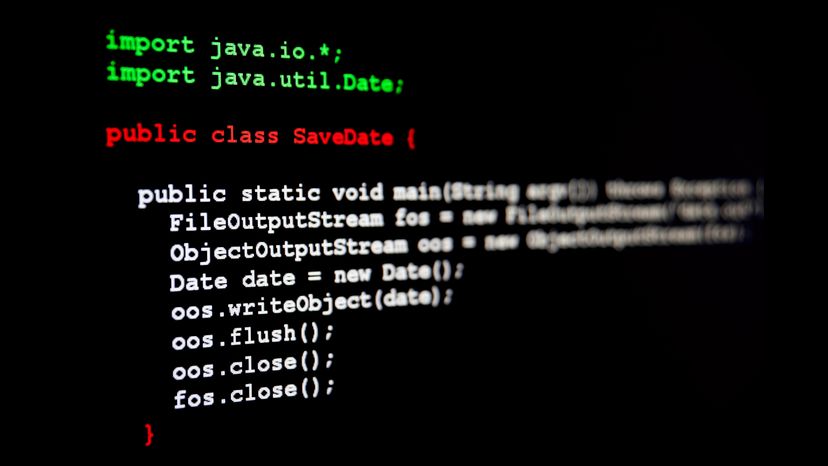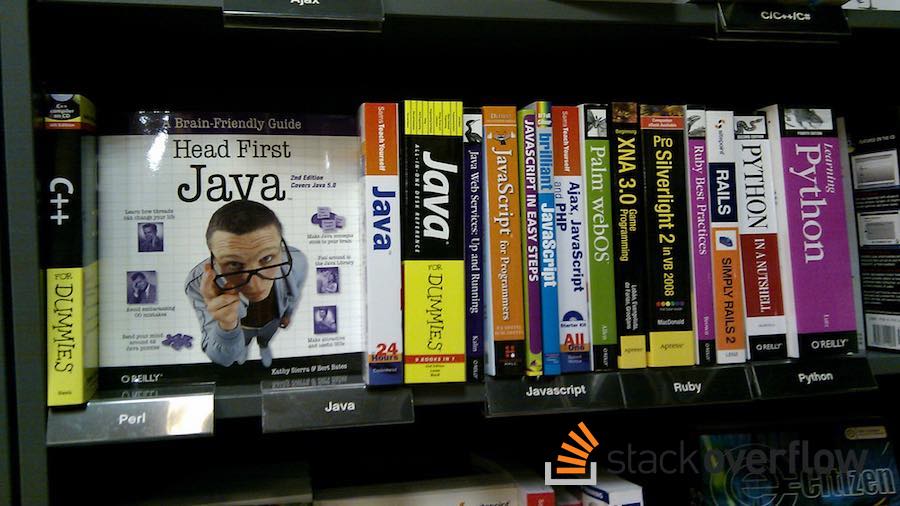Introduction
In a tech landscape buzzing with new languages and frameworks, it’s common to hear that self-taught developers are flocking to the latest and greatest. While languages like Python, JavaScript, and Swift certainly have their appeal, a quiet but powerful revolution has been happening in one of the industry’s most established ecosystems: Java. For the aspiring self-taught developer, overlooking Java in 2024 would be a significant mistake. Far from being a stagnant, verbose language of the past, modern Java is a dynamic, high-performance, and increasingly developer-friendly platform that powers a vast portion of the world’s critical infrastructure.
This article serves as a guide to the latest Java self-taught news, cutting through the noise to reveal why Java is not just relevant but thriving. We’ll explore the exciting evolution of the core language, the game-changing advancements in concurrency with Project Loom, the unparalleled power of the Spring ecosystem, and the essential tools that make Java development more accessible than ever. Whether you’re just starting your coding journey or looking to expand your skillset, you’ll discover that modern Java offers a robust, rewarding, and highly employable path forward.
The Modern Java Renaissance: Core Language Evolution
One of the most significant pieces of Java SE news is the accelerated pace of innovation in the core language. Gone are the days of waiting years for major updates. With a new release every six months and a Long-Term Support (LTS) version every two years, Java is evolving rapidly. This has led to a language that is significantly more concise and expressive than its predecessors.
Embracing the New LTS Releases: Java 11, 17, and 21
For self-taught developers, focusing on the LTS releases is a strategic move, as they are the versions most commonly used in production environments. Each LTS version brings a wealth of quality-of-life improvements that directly address old criticisms of Java’s verbosity.
- Java 11 introduced the
varkeyword for local-variable type inference, allowing you to writevar userList = new ArrayList<User>();instead of repeating the type on both sides. - Java 17 brought Records, an elegant solution for creating immutable data carrier classes. This single feature eliminates pages of boilerplate code (constructors, getters,
equals(),hashCode(),toString()) for simple data objects. - Java 21, the latest LTS, stabilized major features like Virtual Threads (more on that later) and introduced powerful enhancements like Pattern Matching for
switchandinstanceof, making conditional logic cleaner and safer.
Practical Example: Records and Streams in Action
Let’s combine a modern feature from Java 17 news (Records) with a powerful functional feature from Java 8 news (Streams). Imagine you’re building an e-commerce application and need to model a product. Before records, this would require a full class definition. Now, it’s a single line. We can then use the Stream API to easily manipulate a collection of these products.
// Using a record to define a simple, immutable data carrier
// This one line generates a constructor, getters, equals(), hashCode(), and toString().
public record Product(int id, String name, String category, double price) {}
// A service class to manage our products
public class ProductService {
public static void main(String[] args) {
List<Product> inventory = List.of(
new Product(101, "Quantum Laptop", "Electronics", 1299.99),
new Product(102, "Organic Coffee Beans", "Groceries", 19.99),
new Product(103, "Ergonomic Keyboard", "Electronics", 89.50),
new Product(104, "The Art of Java", "Books", 45.00),
new Product(105, "Noise-Cancelling Headphones", "Electronics", 249.00)
);
// Use the Stream API to find all electronics products under $100
System.out.println("Finding affordable electronics:");
List<Product> affordableElectronics = inventory.stream() // 1. Create a stream
.filter(p -> "Electronics".equals(p.category())) // 2. Filter by category
.filter(p -> p.price() < 100.00) // 3. Filter by price
.toList(); // 4. Collect results into a new list (a Java 16+ feature!)
affordableElectronics.forEach(System.out::println);
}
}
// Expected Output:
// Finding affordable electronics:
// Product[id=103, name=Ergonomic Keyboard, category=Electronics, price=89.5]This example showcases how modern Java allows you to write clean, expressive, and functional code with minimal boilerplate, a huge win for developer productivity and readability.
Conquering Concurrency: The Project Loom Revolution
For decades, Java’s approach to concurrency was powerful but complex. Managing platform threads was resource-intensive and often led to complicated code involving thread pools and asynchronous APIs. The most exciting Java concurrency news in years is the final arrival of Project Loom in Java 21 news, which fundamentally changes this paradigm.

What are Virtual Threads?
The headline feature of Project Loom news is virtual threads. Unlike traditional platform threads, which map one-to-one with operating system threads, virtual threads are lightweight user-mode threads managed by the Java Virtual Machine (JVM). You can create millions of them without running out of memory. This allows developers to write simple, synchronous, blocking code that reads like a single-threaded application but scales to handle hundreds of thousands or even millions of concurrent tasks. This is a game-changer for building scalable network applications, microservices, and APIs.
This development in JVM news means that complex reactive programming (part of Reactive Java news) is no longer the only way to achieve high scalability. Instead, the much simpler thread-per-request model becomes viable again, drastically lowering the barrier to entry for building high-performance concurrent applications.
Code Example: High-Throughput Task Processing with Virtual Threads
Let’s demonstrate the simplicity of the new API. Imagine we have a service that needs to process 10,000 tasks, each involving a simulated network call (a 1-second sleep). With traditional threads, creating 10,000 of them would crash most systems. With virtual threads, it’s trivial.
import java.time.Duration;
import java.util.concurrent.Executors;
import java.util.stream.IntStream;
public class VirtualThreadsDemo {
public static void main(String[] args) throws InterruptedException {
// Use the new virtual-thread-per-task executor
// This creates a new virtual thread for each submitted task
try (var executor = Executors.newVirtualThreadPerTaskExecutor()) {
System.out.println("Submitting 10,000 tasks...");
IntStream.range(0, 10_000).forEach(i -> {
executor.submit(() -> {
// Simulate a blocking I/O operation, like a network call
try {
Thread.sleep(Duration.ofSeconds(1));
} catch (InterruptedException e) {
Thread.currentThread().interrupt();
}
// System.out.println("Task " + i + " completed on thread: " + Thread.currentThread());
});
});
// The try-with-resources block will wait for all tasks to complete
// before the executor is closed.
}
System.out.println("All 10,000 tasks completed successfully!");
}
}This code launches 10,000 concurrent operations. While each task “blocks” for a second, the JVM efficiently parks the virtual thread and uses the underlying OS thread for other work. The result is massive throughput with code that is incredibly easy to read and debug. This is a cornerstone of the latest Java virtual threads news and Java structured concurrency news.
The Enterprise Ecosystem: Spring Boot and Beyond
A self-taught developer’s journey often culminates in building real-world, enterprise-grade applications. This is where the Java ecosystem truly shines, and the undisputed king of modern enterprise Java is Spring Boot.
Spring Boot: The Gateway to Modern Enterprise Java
In the past, Java Enterprise Edition (Java EE, now Jakarta EE news) could be complex, requiring extensive XML configuration. The top Spring news for any new developer is that Spring Boot completely changed this. It’s an opinionated framework that simplifies the creation of stand-alone, production-grade Spring-based applications that you can “just run.”
Key features include:
- Auto-configuration: Intelligently configures your application based on the JARs on your classpath.
- Starter Dependencies: Simplifies build configuration with tools like Maven or Gradle. For example, including
spring-boot-starter-webis all you need to build a web application. - Embedded Servers: No need to deploy WAR files to an external server; your application runs as a standalone JAR with an embedded server like Tomcat or Netty.
This focus on convention over configuration, covered in all Spring Boot news, allows developers to get productive in minutes, not days.
Practical Example: Building a Simple REST API

Here’s how astonishingly simple it is to create a REST endpoint using Spring Boot. This controller could serve the Product record we defined earlier.
import org.springframework.web.bind.annotation.GetMapping;
import org.springframework.web.bind.annotation.PathVariable;
import org.springframework.web.bind.annotation.RestController;
import java.util.List;
import java.util.Optional;
// A record for our Product data
record Product(int id, String name, String category, double price) {}
@RestController
public class ProductController {
// A static list to act as our in-memory database
private final List<Product> products = List.of(
new Product(101, "Quantum Laptop", "Electronics", 1299.99),
new Product(102, "Organic Coffee Beans", "Groceries", 19.99),
new Product(103, "Ergonomic Keyboard", "Electronics", 89.50)
);
// This method handles GET requests to "/products"
@GetMapping("/products")
public List<Product> getAllProducts() {
return products;
}
// This method handles GET requests to "/products/{id}", e.g., "/products/101"
@GetMapping("/products/{id}")
public Optional<Product> getProductById(@PathVariable int id) {
return products.stream()
.filter(product -> product.id() == id)
.findFirst();
}
}With just this class and the right Spring Boot starter dependency, you have a fully functional REST API. This accessibility is a major reason why Java remains dominant in the backend development space. Furthermore, the ecosystem continues to innovate with projects like Spring AI news and LangChain4j news, bringing generative AI capabilities directly into the familiar Spring environment.
Essential Tooling and Best Practices
Becoming a proficient developer involves more than just writing code; it’s about mastering the tools and practices that ensure quality and maintainability. The Java ecosystem is mature and offers best-in-class solutions.
Mastering Your Build and Test Cycle
Every serious Java project relies on a build tool. The two main players are Maven and Gradle. Both manage dependencies, compile code, run tests, and package your application. As a beginner, understanding the basics of either (e.g., the pom.xml in Maven) is crucial. Related Maven news and Gradle news often focus on performance and dependency management improvements.
Testing is non-negotiable in professional software development. The standard tools are:

- JUnit: The de facto standard for unit testing in Java.
- Mockito: A powerful library for creating “mock” objects, which are essential for isolating the code you are testing from its dependencies.
Here’s a simple JUnit test for a service method, a key part of staying current with JUnit news and Mockito news.
import org.junit.jupiter.api.Test;
import static org.junit.jupiter.api.Assertions.*;
// A simple service class to test
class DiscountService {
// Apply a 10% discount, but only for prices over $50
public double calculateDiscountedPrice(double originalPrice) {
if (originalPrice > 50.0) {
return originalPrice * 0.90;
}
return originalPrice;
}
}
// The JUnit 5 test class
class DiscountServiceTest {
private final DiscountService discountService = new DiscountService();
@Test
void testDiscountIsAppliedForHighPrice() {
double price = 100.0;
double expected = 90.0;
double actual = discountService.calculateDiscountedPrice(price);
assertEquals(expected, actual, 0.001); // Use a delta for double comparison
}
@Test
void testNoDiscountForLowPrice() {
double price = 40.0;
double expected = 40.0;
double actual = discountService.calculateDiscountedPrice(price);
assertEquals(expected, actual, 0.001);
}
}Choosing Your JVM
A common point of confusion for newcomers is the JVM itself. You don’t just download “Java” anymore. The language is an open standard (OpenJDK), and multiple vendors provide builds. This is fantastic news for developers. Popular distributions include:
- Adoptium Temurin: A community-led, fully open-source build.
- Amazon Corretto: Amazon’s no-cost, production-ready distribution of OpenJDK.
- Azul Zulu: A popular choice in the enterprise with commercial support options.
This vibrant competition in OpenJDK news ensures that developers have free, high-quality, and regularly updated JVMs to choose from, a key aspect of the modern Java ecosystem news.
Conclusion
For the self-taught developer charting their course, the Java landscape in 2024 is more exciting and accessible than ever. The core language is modern and concise, thanks to a rapid release cycle that has delivered features like Records and Pattern Matching. The concurrency model has been revolutionized by Project Loom and virtual threads, making it simple to build massively scalable applications. The enterprise ecosystem, led by Spring Boot, provides a clear, productive, and highly in-demand path to building robust backend services.
Don’t let outdated perceptions fool you. Java is not standing still. It’s a mature, high-performance platform that continues to innovate at a breathtaking pace. By focusing on the latest LTS release (Java 21), mastering modern frameworks like Spring Boot, and embracing best practices in testing and tooling, you are investing in a skill set that is foundational to the global technology industry and will serve you for years to come.

